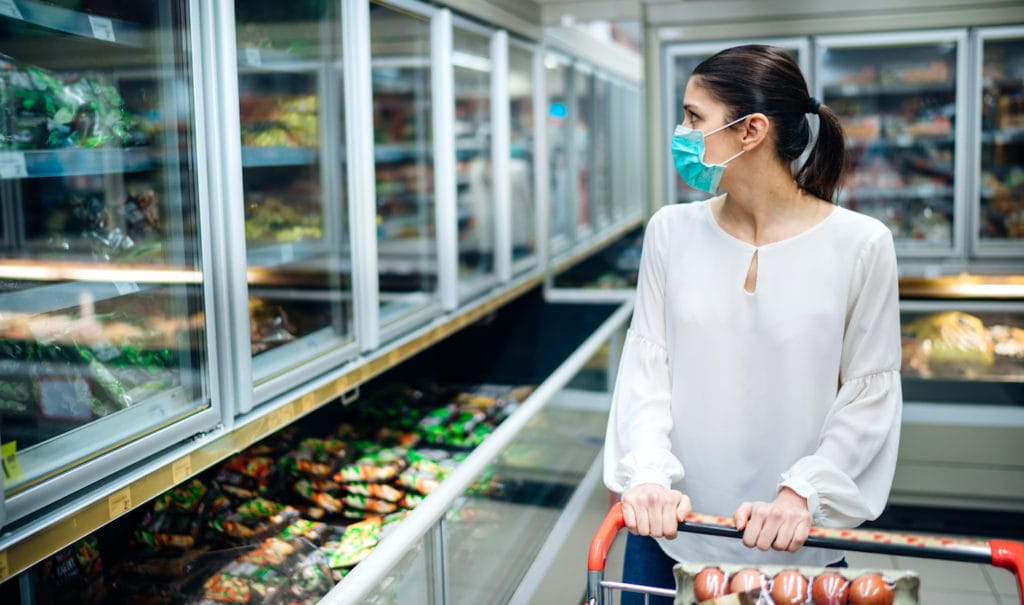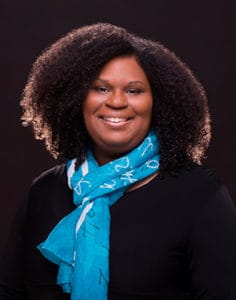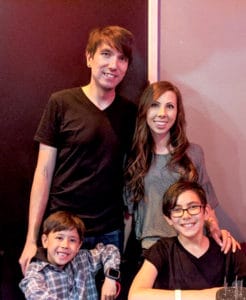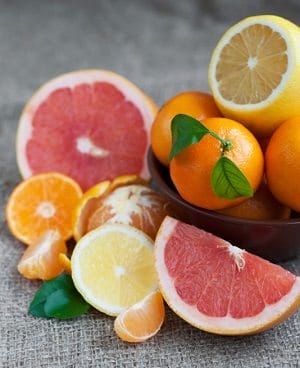
The run on grocery staples with the coronavirus is especially tough for food allergy families. They already faced restricted diets, with a smaller number of foods that are safe to eat. Allergic Living checks in on how these families are faring, from their most urgent needs to their worries and workarounds.
FOR Carey Simpson, the sinking feeling started in the milk aisle. The Michigan mother of two young kids had gone to Costco to pick up a few groceries.

Her 4-year-old daughter has an anaphylactic allergy to tree nuts, and there is only one milk brand at this store that isn’t nut milk, or doesn’t warn of potential cross-contact. The shelf where she usually found that milk brand, however, was empty.
“When I saw the milk section, that was the biggest indication this is going to be a problem,” she says. “I was like, ‘What is going on right now?’”
Then she went to find Cheerios, her daughter’s safe cereal, but it was also sold out. Her go-to pasta sauce, gone. Bananas, a favorite snack food, gone. Strawberries, gone. She headed to her local grocer, only to find the shelves there were also bare. Even for an allergy mom accustomed to navigating tricky food situations, it was shocking.
“I was in this world of reading labels and contacting vendors and bringing cookies to birthday parties,” says Simpson. “Now people are taking all these safe things because they think it’s the end of the world.” She is frustrated with the grocery shoppers who cleared the shelves: “They’re not thinking about anybody else who might really need it.”
For millions across North America and around the world, the last several weeks have been unnerving. But families with food allergies have an added layer of worry as they ask: “Will I be able to find the foods that are safe for me and my kids?”
Rising to EoE Challenges
Christina Ilardi is a nurse and the mom of three kids, two of whom have EoE, or eosinophilic esophagitis, the allergic inflammatory disease of the esophagus that often requires severely limited diets. One son also has a serious pulmonary disease that makes him especially prone to infection.
Normally, Ilardi would be stocked up on her kids’ EoE-friendly foods, but the family had just moved homes in Connecticut. They had one fewer freezers, so they were living on fresh foods and their frozen food supply was low.
“And because my son is high risk, I really didn’t want us going out anymore,” says Ilardi. “My normal course of grocery shopping is hitting multiple stores to get what I need, and multiple specialty stores, farms, co-ops.” But with the coronavirus pandemic, that has changed.
Ilardi started using a delivery service, but their website went down, likely because of demand. So she turned to social media, asking if anyone had seen organic chicken breast or turkey – her kids’ only safe protein – in stores. “The next day we had six people drop off chicken for us!” she says. “It was so heartwarming and nice.”
Still, Ilardi is anxious about what the coming weeks and months could hold. All of the major appliance stores were sold out of freezers in her area, but she bit the bullet and bought a pricey upright that she could put in the garage.
She has also stocked up on rice and flour, as well as amino acid formula, just in case the safe food runs out.
“It has been difficult, managing my anxiety and staying informed, and still keeping it on the down low,” says Ilardi, who has been trying to shield her kids from her concerns. “We’re just doing our best at this point.”
Gluten-Free Store: ‘Day at a Time’
Meanwhile, Wendy Krop is doing her best to keep the doors open at Sanctuary Modern Kitchen. Her gluten-free restaurant, bakery and food store is now offering pickup and delivery service.
But Krop says the run on grocery stores meant she couldn’t get many of the ingredients she needed for her shop’s production. At the same time, clients were clearing her store’s shelves and freezers. She had to put limits on how much people could buy, and warn customers that some items may not be available.
Krop has approached local grocers to arrange to purchase the items she needs. Still, she has concerns about the supply chain, and her employees are contacting local farmers to see if they can secure a direct line on certain goods.
“We’re looking to be creative, but we’ll just have to take it one day at a time. We have told everyone: ‘This is what’s happening this week. If it changes we’ll tell you.'”
Low-Income Grocery Woes

The Food Equality Initiative (FEI) is also working hard to stay up and running. The Kansas City-based charity provides allergy-friendly and gluten-free foods to people who need them the most. But because of shortages in the grocery supply chain, their own systems have been disrupted.
According to the organization, 21 percent of children diagnosed with food allergies experience food insecurity – that is, “the state of being without reliable access to a sufficient quantity of affordable, nutritious food.” And that was before the coronavirus arrived.
Families with allergies or gluten intolerance can’t just go to food pantries or to soup kitchens when they run out of food, says Emily Brown, FEI founder and CEO. Few of them offer safe options. At the same time, schools are closed, so school lunch programs aren’t helping to feed kids. With millions of Americans facing layoffs and uncertain economic futures, the demand will be greater than ever.
“In a time when we’re facing a pandemic, we need everyone to have access to safe food because we don’t want to put any additional strain on our healthcare system,” Brown says. “We don’t want anybody to have experience anaphylaxis or make choices to eat unsafe food because they simply can’t afford it and can’t find it.”
She and her team have been working around the clock making connections with local farmers, hiring gluten-free bakeries in the area to bake bread, and arranging shipments and deliveries to families in need.
They’re also pleading for donations, and advocating at the city, state and federal level. They don’t want low-income families with allergies to get left behind during the COVID-19 crisis.
“I feel like we’re in the desert screaming, ‘This is important,’” Brown says. “And if we don’t invest in the safety net, when we need it, it may not be there.”
Finding a Bright Side for Kids

teaching the kids baking skills.
In California, Ashley Ann Smith is trying to make the best of a tough situation. The L.A. mom has two kids with multiple food allergies, among them peanuts and tree nuts, and she has been slowly stocking up on safe foods for weeks.
She considers herself fortunate because she could afford to buy more. Still, she had to take money from other areas of the family’s budget to cover the extra groceries. “It can be difficult to rearrange your finances,” says Smith, who points out that allergy-friendly items can be especially pricey.
She has been purchasing more frozen fruits and vegetables than usual, as well as basic baking ingredients, so she and the kids can make breads, cookies and pizzas from scratch.
“My kids really enjoy baking, so that’s fun,” says Smith. Activities like baking also give children a sense of normalcy during uncertain times. And she notes, they can pick up new skills. “With food allergies, you need to know how to cook. So maybe they come out of this by becoming better cooks and bakers,” she says with a laugh. “For me, that’s a win.”
Smith, a support group leader for the NNMG Food Allergic Families Group, is creating week-long meal plans. She wants to pace her family’s grocery consumption and feel reassured they have what they need. She’s also doing her best to simply keep calm and carry on.
“Obviously, it’s more stressful. But I don’t want my children feeling that energy, because that doesn’t do anybody any good,” she says.
She and her husband speak candidly with their kids, “but I tell them I always have a plan. Maybe Plan A doesn’t work, but it’s OK, because you have a Plan B, and a Plan C,” she says. “Hopefully you don’t get down to those, but there are always options.”
Grocery Help for Allergy Mom
There are always good people, too. Katie Martino Lopez is a Long Island mother of three kids, the youngest of whom has extensive food allergies and asthma, and is immuno-compromised. Her middle child also has asthma, and her mother, in her 70s, has respiratory issues.

So it comes as no surprise when Lopez says she’s had some seriously anxious moments over the past few weeks. Seeing the store shelves wiped out really made her heart sink.
“Everyone is in such a panic mode that it’s become a little Hunger Games. People are being a bit selfish,” says Lopez. “But I mean, it’s nature. Especially if you’re parents, you’re just thinking: ‘Take care of my child.’”
But then Lopez’s community stepped in to help. After being unable to find any of her son’s safe milk alternative in stores or online, she took to Twitter and asked for people to keep an eye out.
Before long, even friends she hadn’t seen since elementary school were answering that they had found some for her. “It was unbelievable how people, however close they were, acquaintance or best friend, reached out to me and said, ‘I’m here and they have it. Do you want me to get it?’ ‘I’m in New Jersey. I could ship it to you,’” says Lopez.
“So there was this huge human element that came out and gave me warm fuzzies – and I’m usually not a warm, fuzzy gal.”
Her two older brothers also drove half an hour from different points to drop off key items. “I said, ‘My God, there’s so much good in people,’” says Lopez. “Empathy can be a really amazing thing, and it came out the other day. And I’m so grateful.”
Lopez plans to be smart about her family’s food consumption, to not be wasteful, and to take a page from her grandparents’ playbook. “They came here from Italy and knew how to eat every bit of meat and every staple in the pantry and still make it delicious and stretch that dollar,” she says.
She’s also trying to go a little easier on herself. “I have to just say, ‘I did enough. I did as much as I can for right now,’” she says. “It’s about being prepared, not panicking and just taking every day as it comes.”
Allergic Living would like to hear other families’ and individuals’ experiences with finding (or not finding) crucial safe foods. Please write to us at: [email protected].
Related Reading:
Survey of Allergy-Friendly Food Makers in Coronavirus Crisis
Allergy Shopping & Cooking Tips in COVID-19 Times
Coronavirus and Asthma: How to Cut Risks and Keep Control





